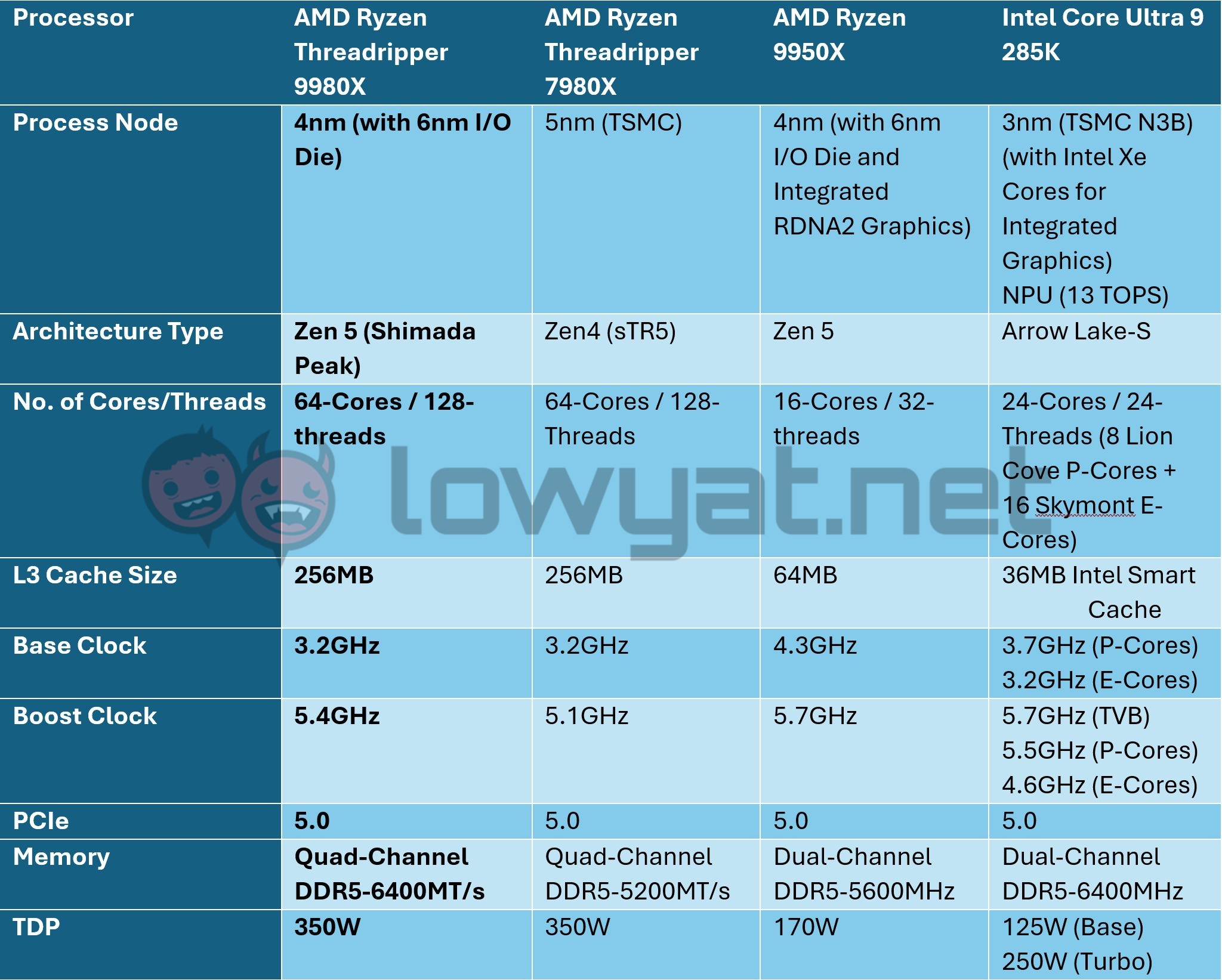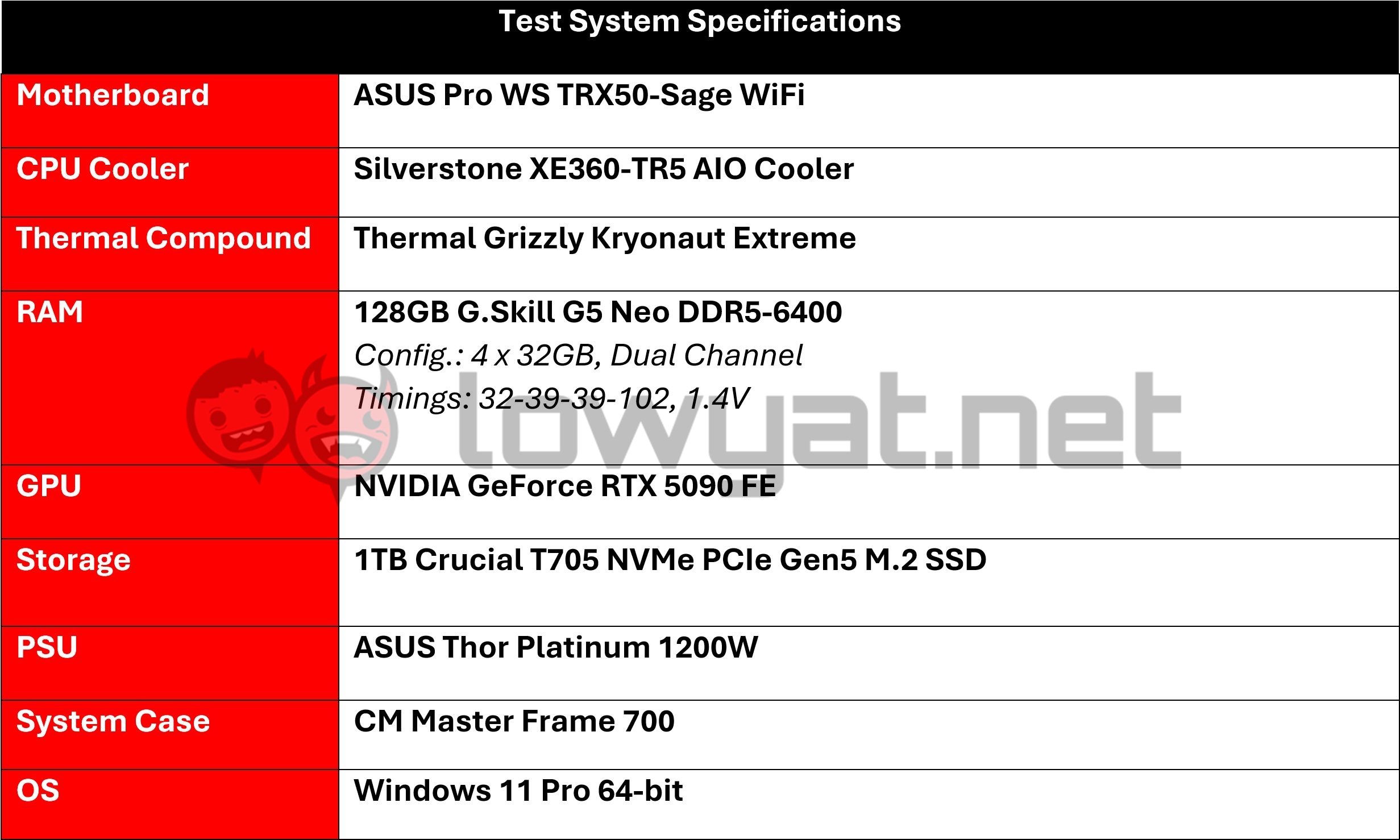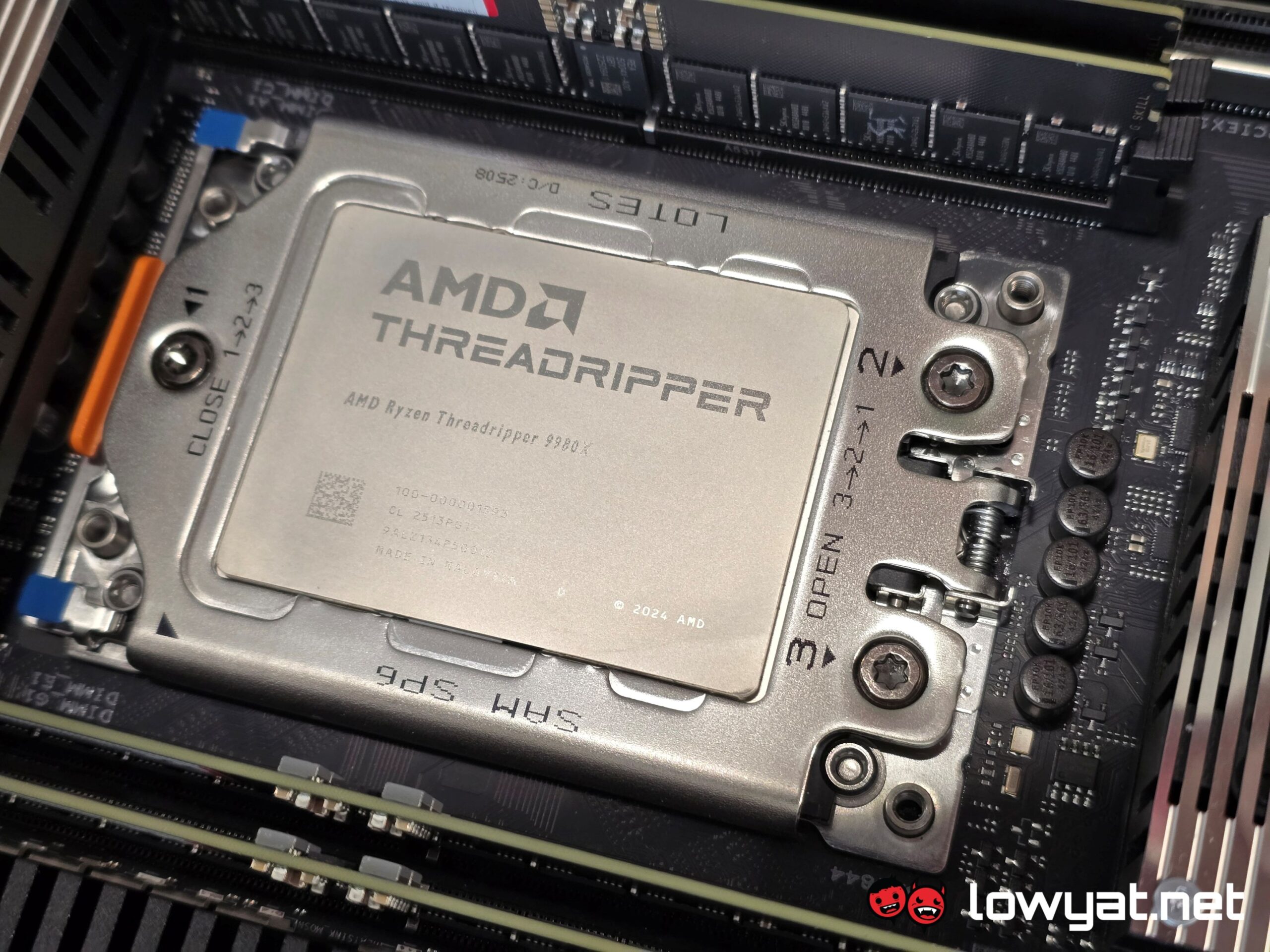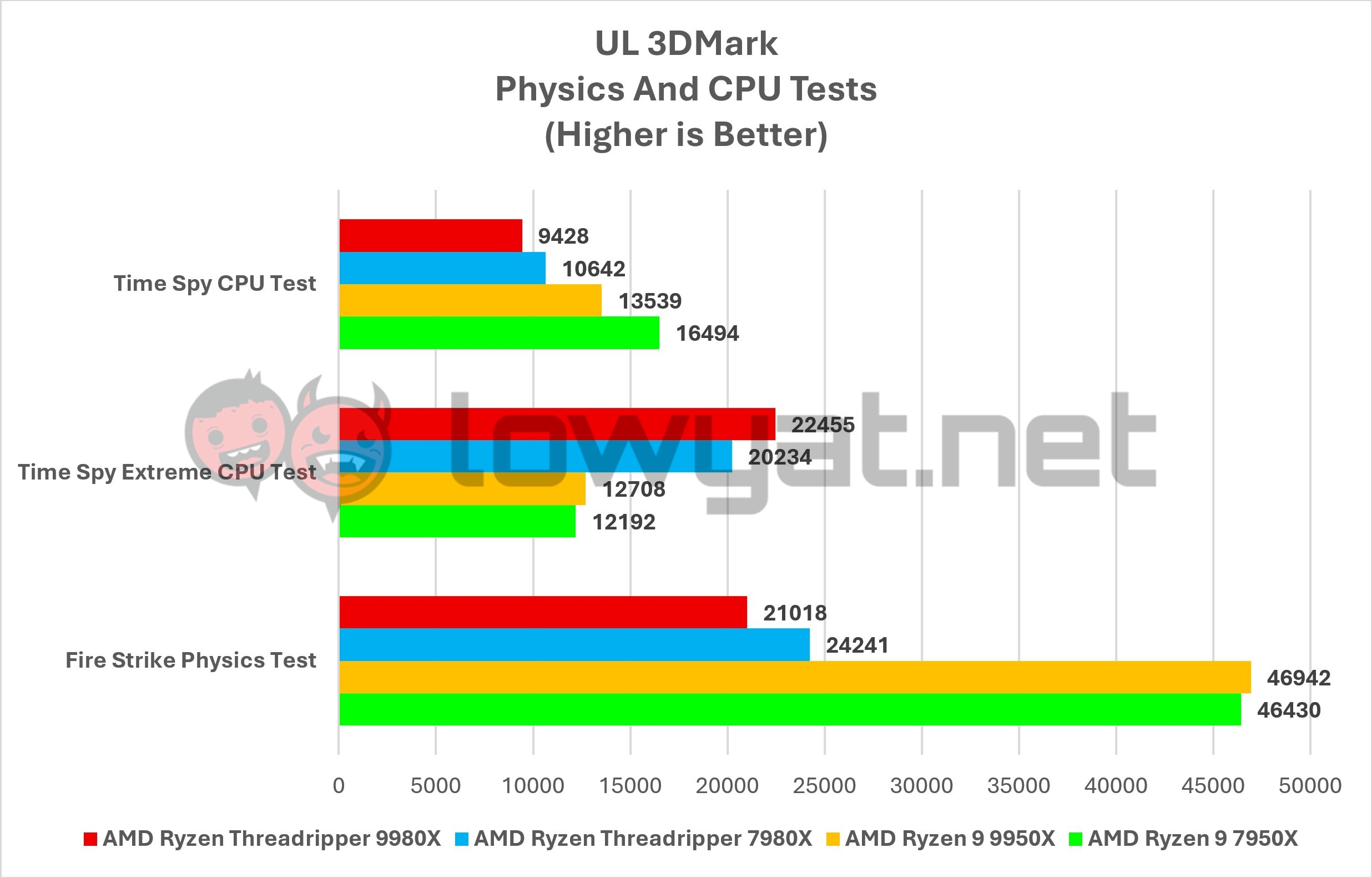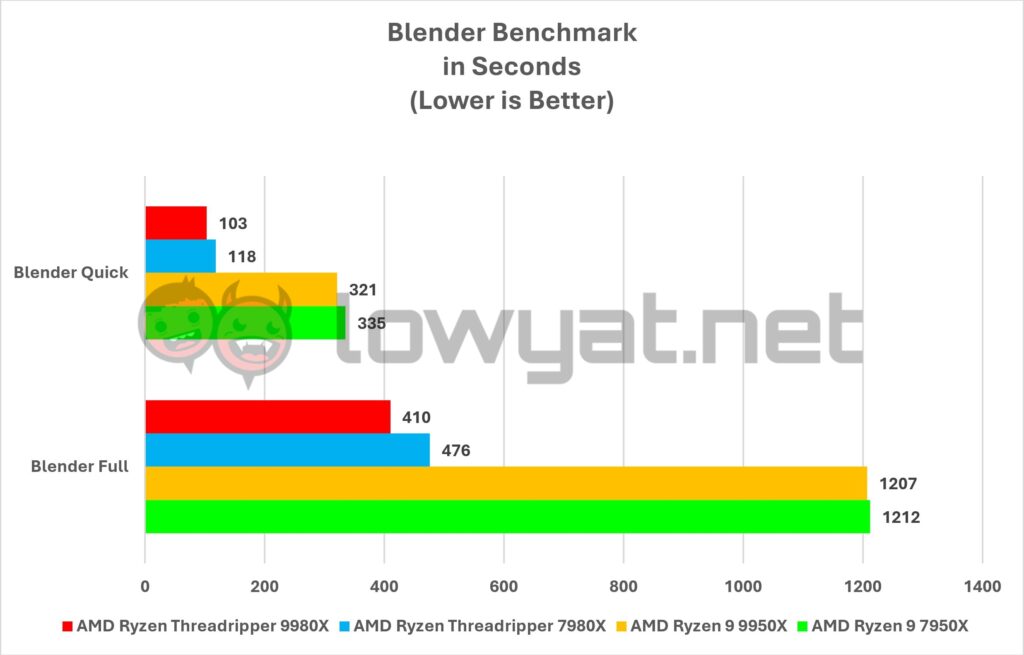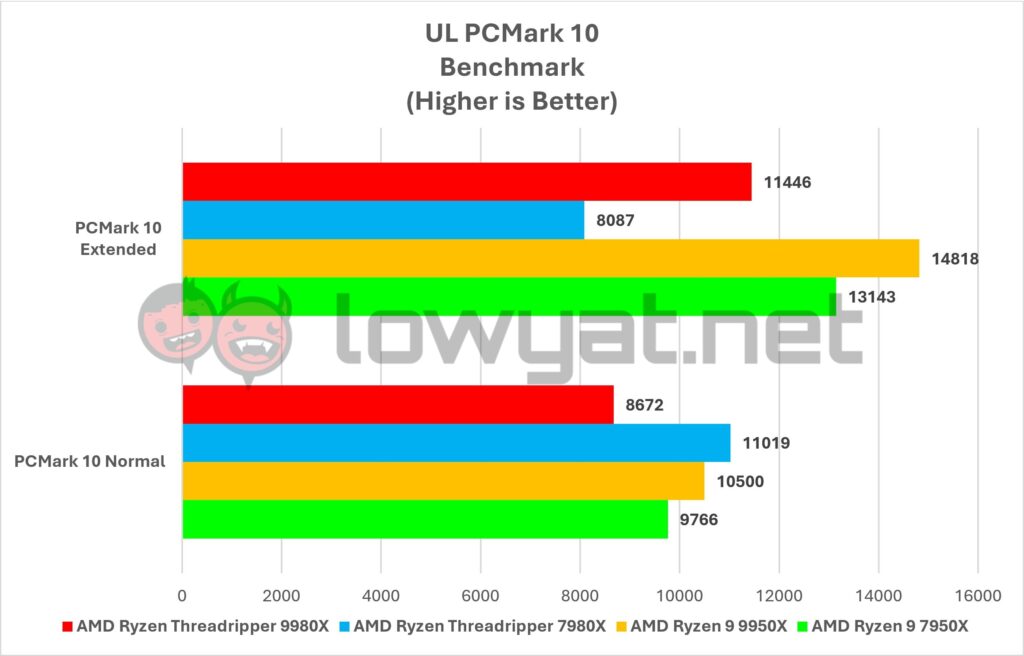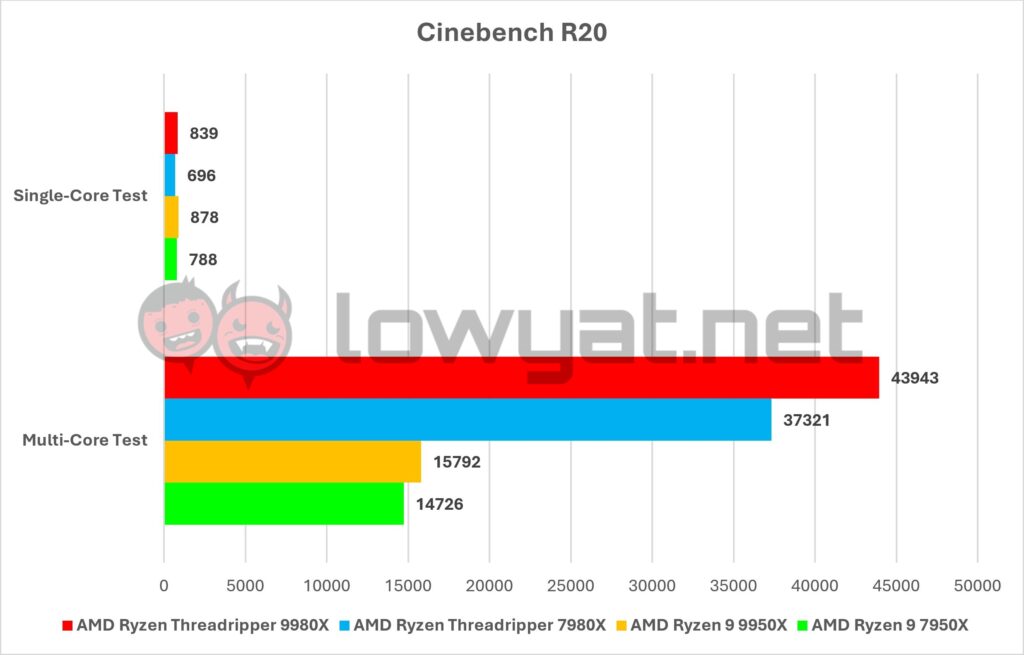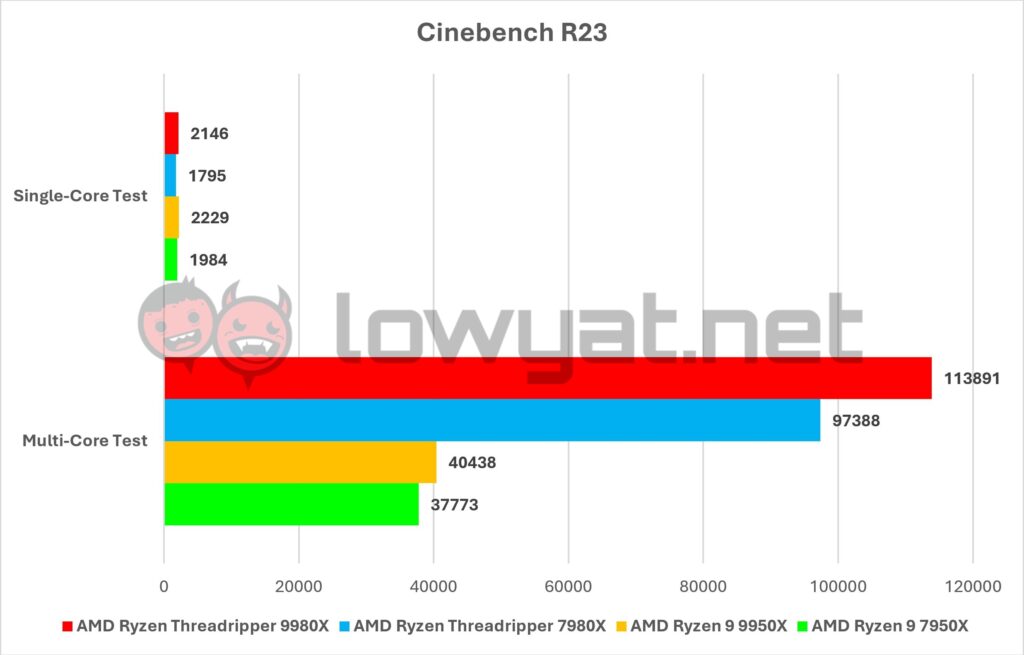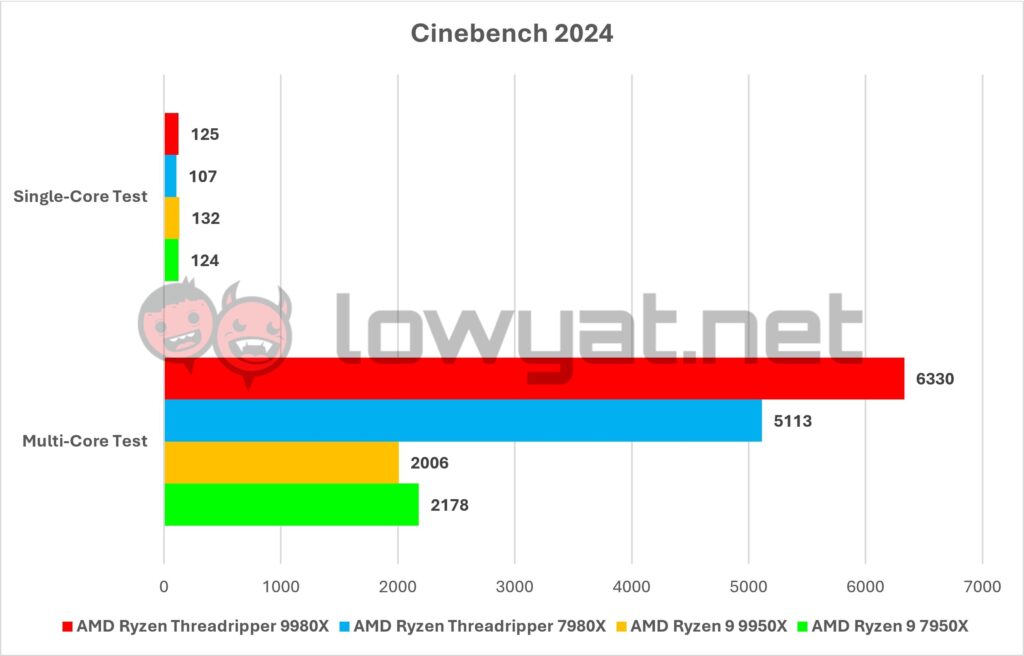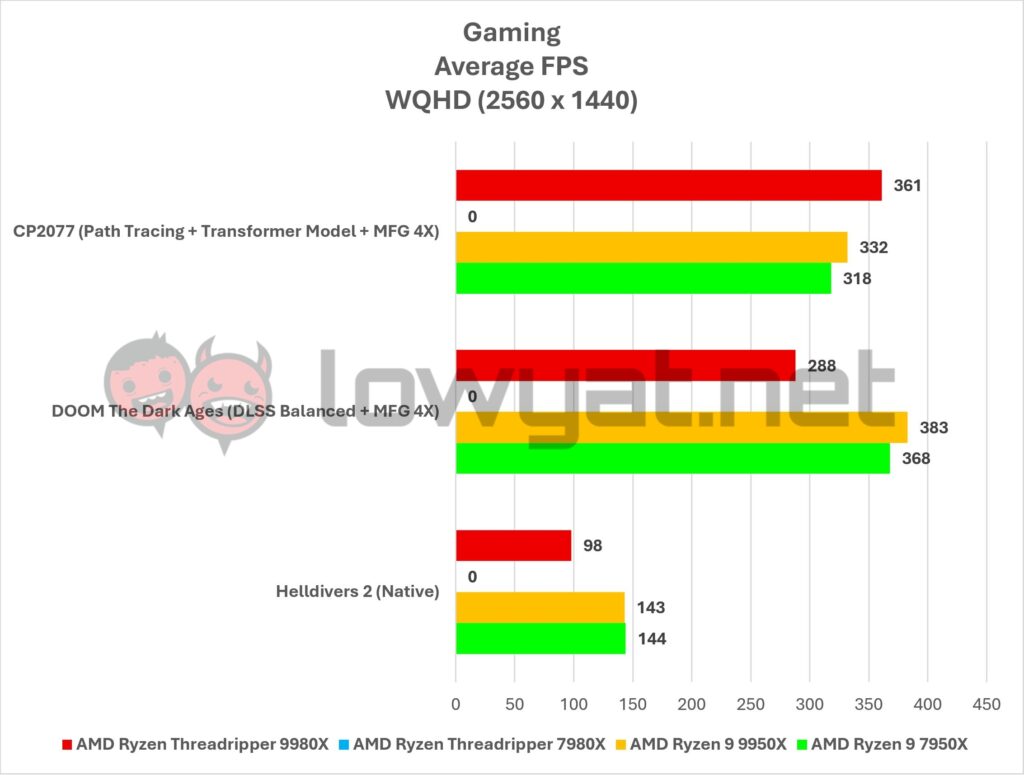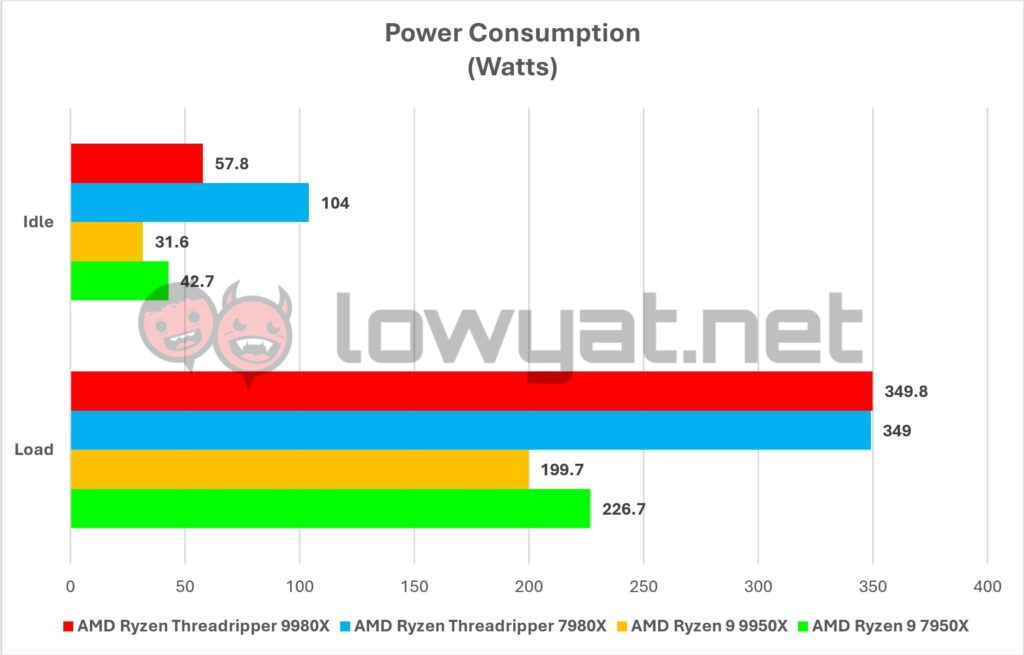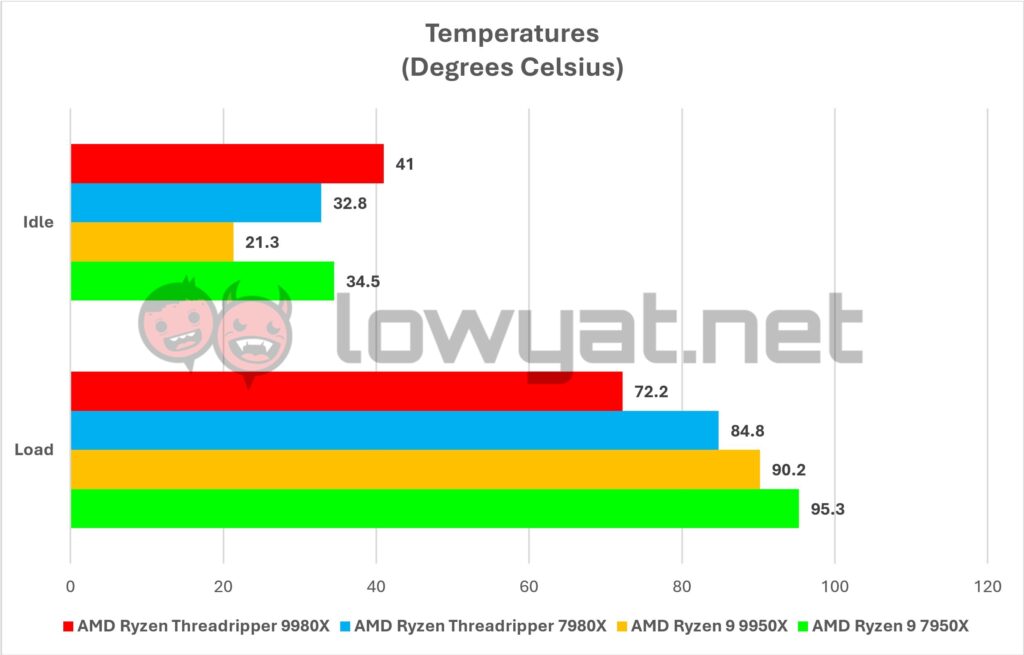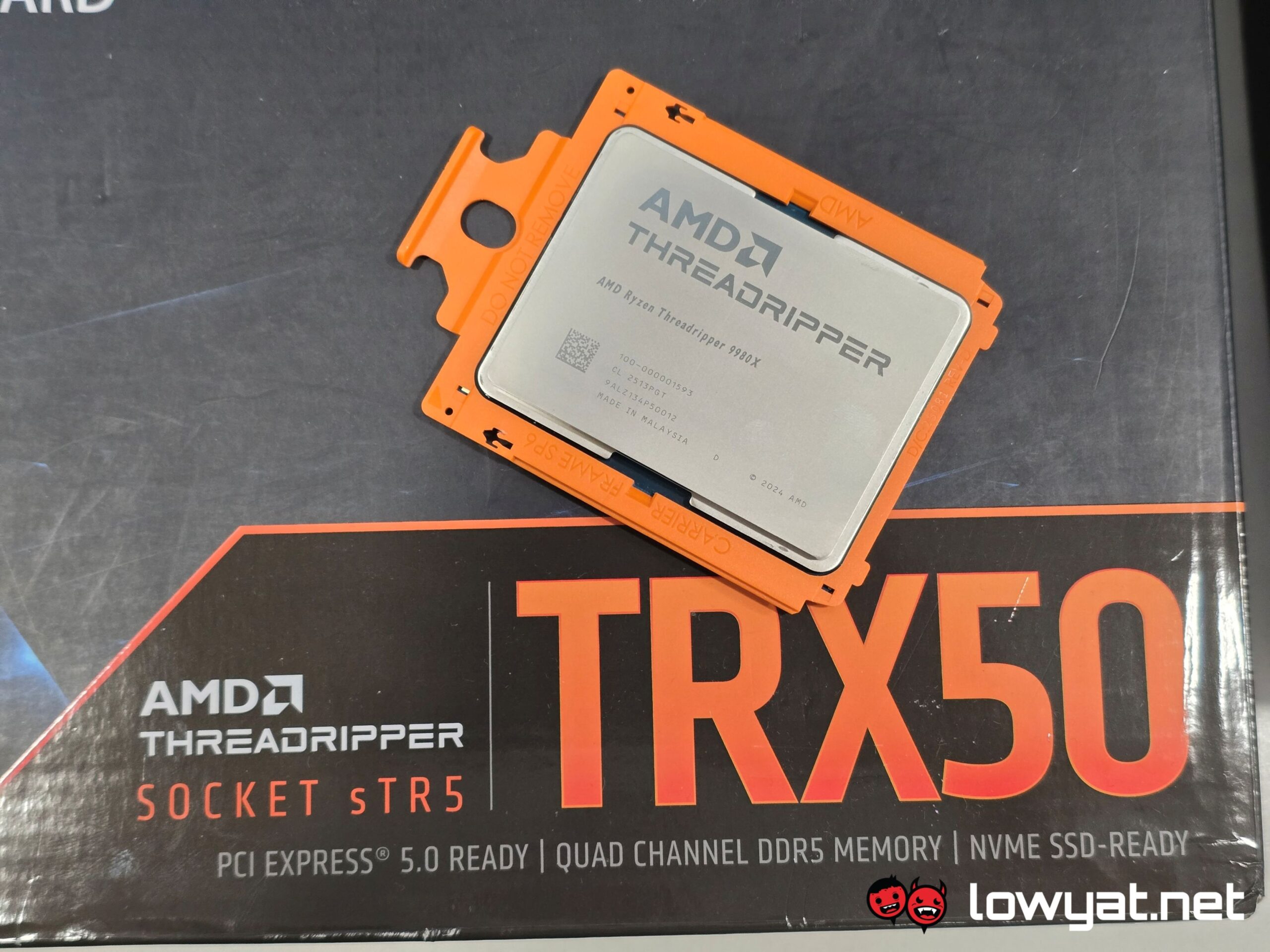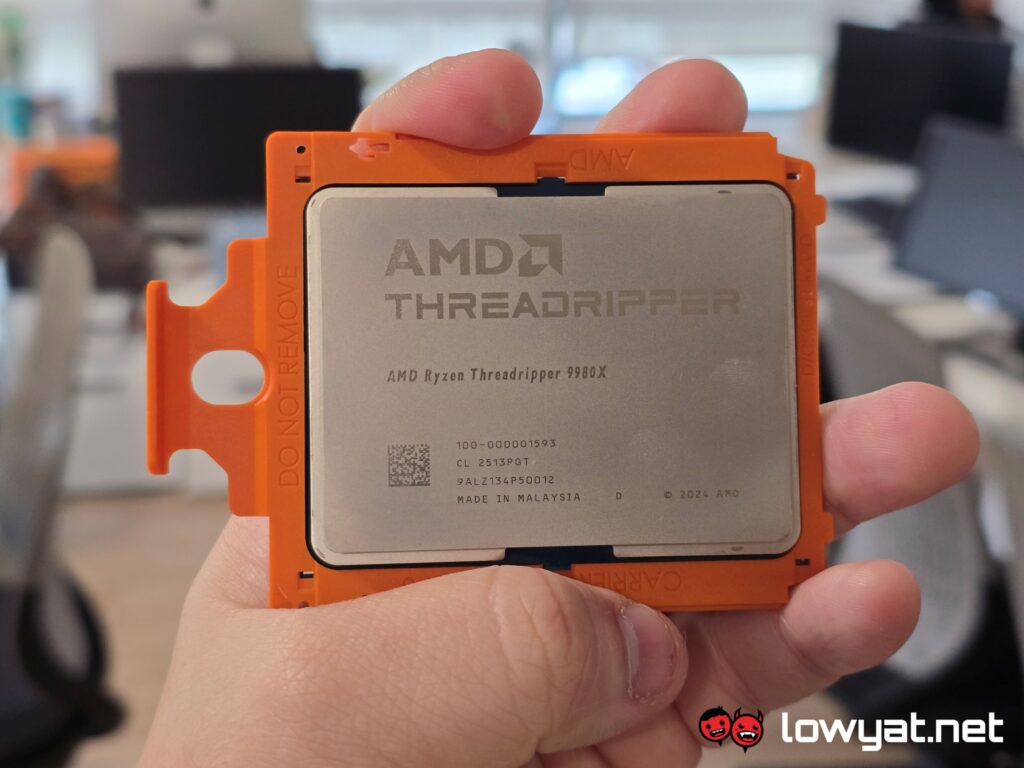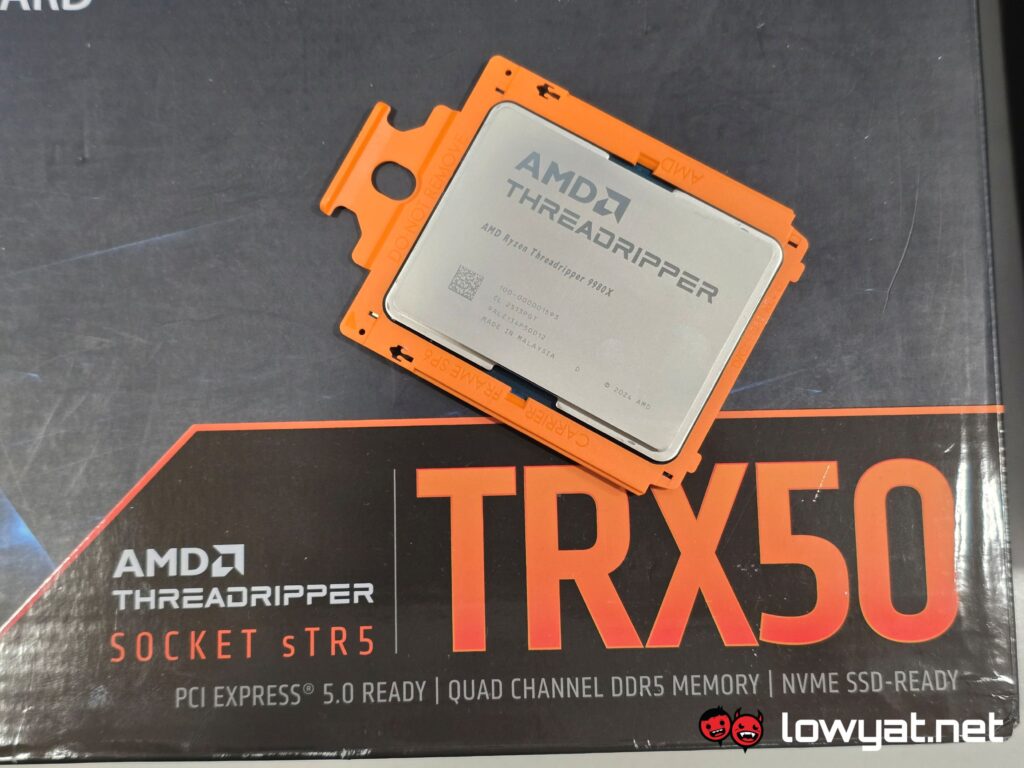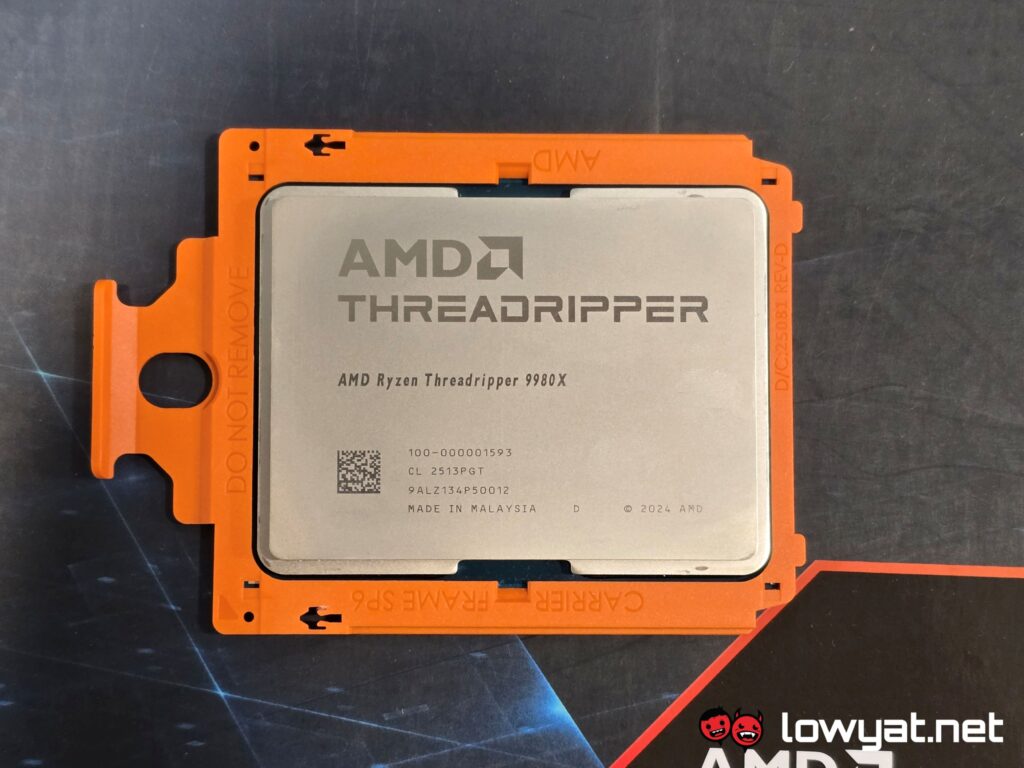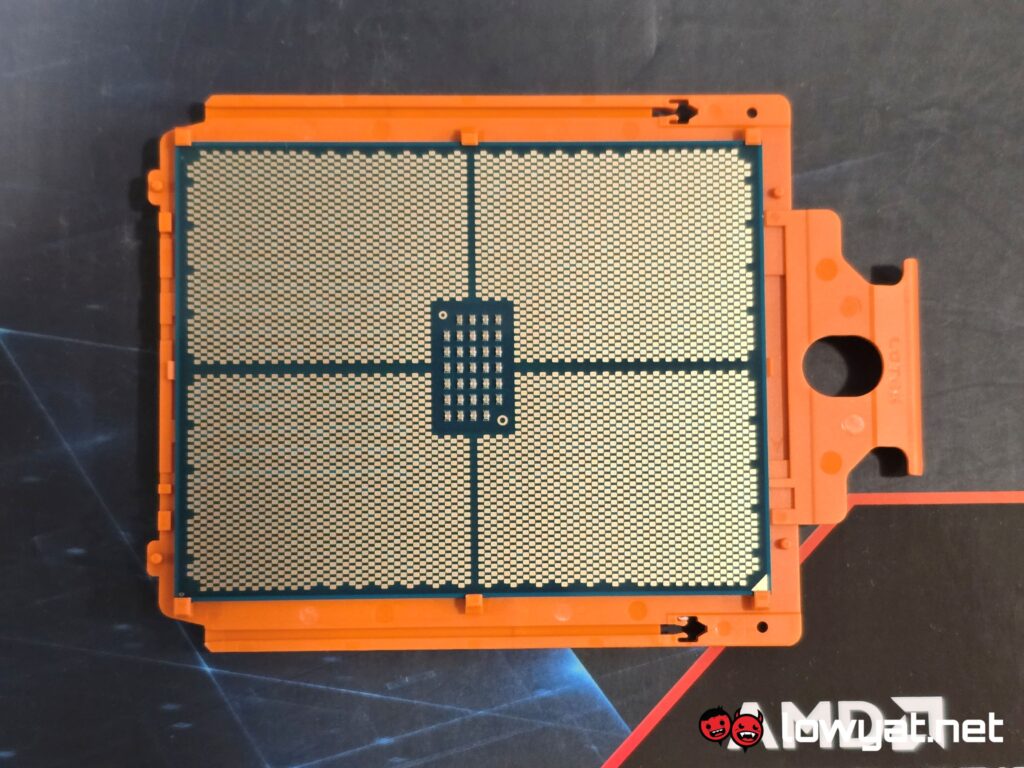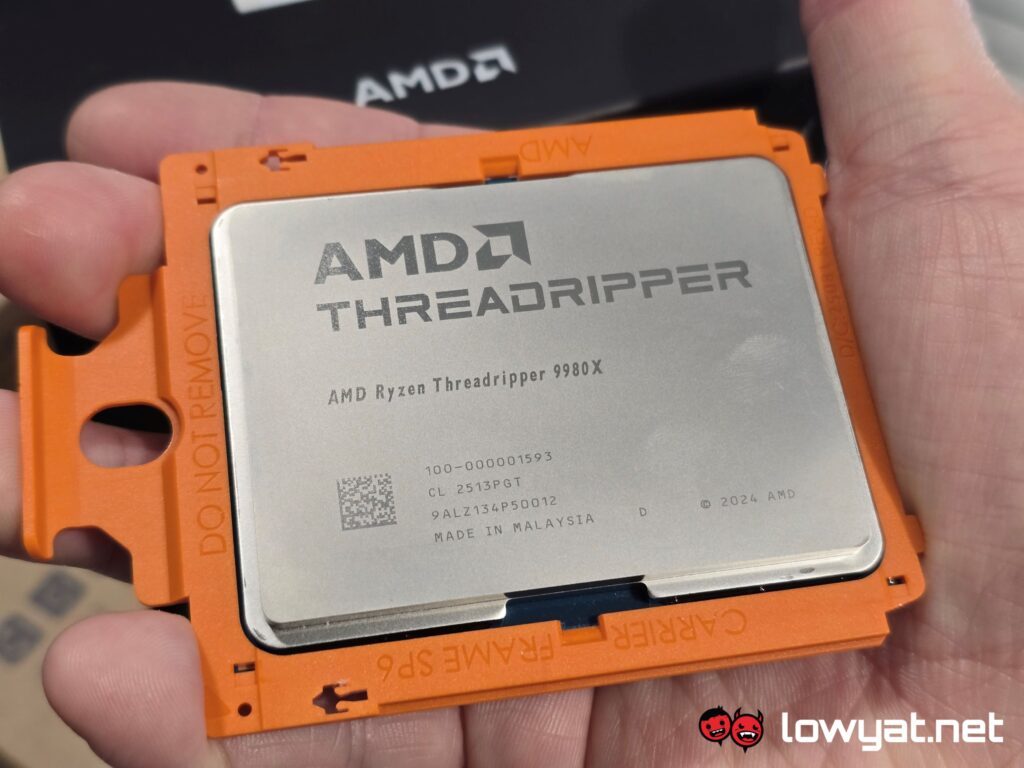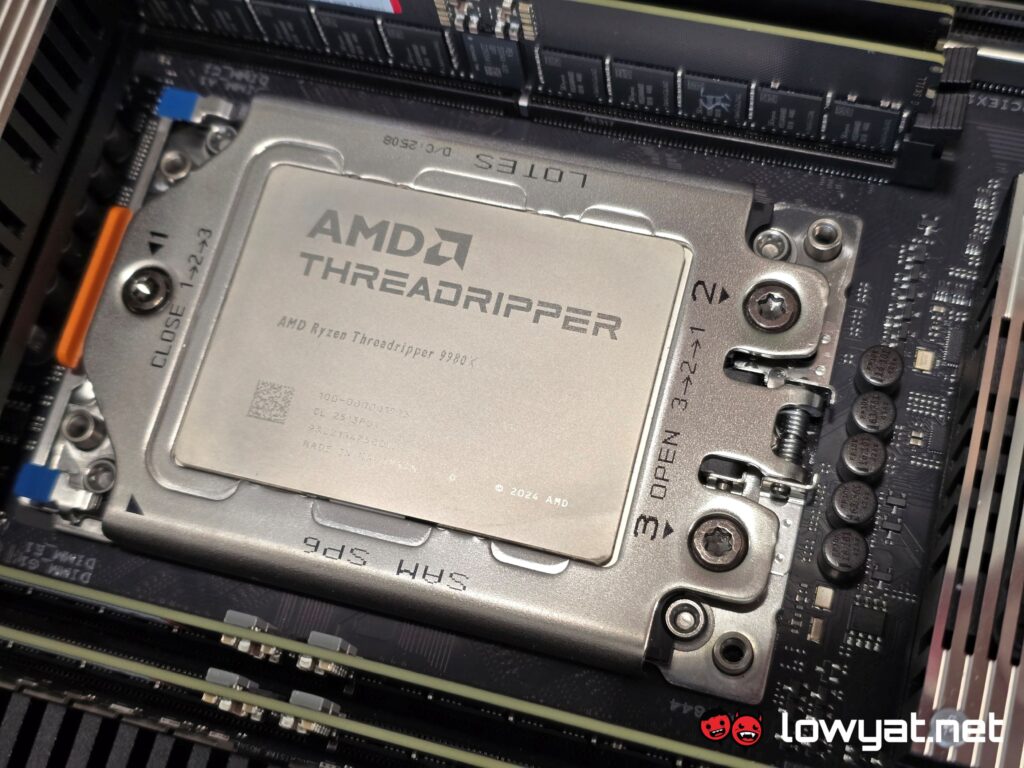AMD Ryzen Threadripper 9980X Review: Better Than The Last In Some Ways
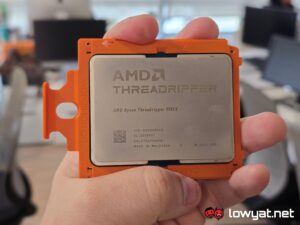
AMD’s Ryzen Threadripper 9000 Series has gone official, and the list includes both the PRO WX and the non-WX lineup of processors. In conjunction with its launch date of 31 July, AMD sent over two of its “consumer” segment HEDT Threadripper products, the 9980X and 9970X.
In this review, I’ll be focusing on the 9980X and its performance, with a separate review for the 9970X to be posted at a later date. With that, on to the review.
Specifications And Design
On paper, the Threadripper 9980X and its predecessor are more or less the same, the obvious differences being that AMD’s latest HEDT processor is built around its “Shimada Peak” Zen5 architecture, which technically, is based around the same 4nm TSMC process that also comes with the 6nm I/O die as the consumer-level Ryzen 9000 Series lineup. And while it has a higher boost clock of 5.4GHz and support for much faster memory speeds, everything else remains the same – same number of cores, same base clock, same TDP.
As with all Threadripper CPUs, installing this CPU requires more than just dropping the component into the socket and calling it a day. I still have to unscrew the retention bracket, lift up the secondary slide bracket, slide in the processor, secure it down, and then screw the retention bracket back in place. Heck, and I haven’t even installed the specially designed CPU cooler for it.
Testbench
Given that this is a Threadripper CPU, AMD was gracious enough to provide me with the essentials to test it. The motherboard is the same as the one I used back in my review of the Threadripper 7980X back in 2023, but the cooler is from Silverstone this time around, instead of the NZXT model that was provided. Additionally, AMD provided a PCIe Gen5 SSD from Crucial to test with the CPU.
It’s an appropriate provision, given the speedy nature of the beast. The 128GB of DDR5 RAM is still also from G.Skill, albeit a little different from the last batch.
Benchmarks, Temperature, And Power Consumption
So, with the 9980X, the performance metrics on the synthetic tests are a mixed bag. On the Physics and CPU tests of UL’s 3DMark, the processor actually loses out to its predecessor in the Time Spy test but comes out ahead on the Time Spy Extreme test, and this is the more intensive test.
Likewise, it falls behind with in the Physics test of Fire Strike, and by a pretty big margin too. In this, I suspect that not all 64 cores are being fully utilised for this portion of the test.
On the subject of all-core utilisation, the Blender benchmark is where all 64-cores were running at full speed, beating out the 7980X by 15 seconds in the Quick CPU test and 66 seconds in the full CPU test. In PC Mark10, that same discrepancy in 3DMark presents itself again, with the Extended test being far higher and overtaking its predecessor, but falls short by several thousand points in the normal test.
The synthetic tests in which the 9980X thrives is the Cinebench benchmarks. Across all three versions of the test – 2024, R23, and R20 – there is no doubt that the 9980X is the dominant processor, and even overpowering the 7980X by a very long lead.
In the realm of gaming, you may notice that the 7980X doesn’t have a score, and there is a perfectly good reason for that: at the time the three games came out, the HEDT CPU was no longer with me. As such, I’m only able to provide comparisons between the 9980X and the consumer Ryzen 9 9950X and the 7950X. The final results here show a high-performing processor that, again, may not be in its element. Taking Helldivers 2 as an example; while it does manage to maintain a 90 fps average, it’s a little disappointing to see that that’s the average cap at both 1440p and Full HD. An obvious bottleneck notwithstanding, these numbers provide a clear picture and definition of the term overkill, and why the consumer-segment Ryzen lineup exists.
Conclusion
Look, I’m not going to finesse you. At the end of the day, the Ryzen Threadripper 9980X is, and always has been, a CPU far beyond the price range of the average PC gamer, and that includes gamers that can afford the top-tier, consumer-class Ryzen 9000 Series CPUs, including the 9950X, 9900X, and 9800X3D. At US$4,999 (~RM21,172) a pop, there is a reason that this HEDT processor is targeted at folks working in heavy-duty industries like professional visualisers and the like.
And that’s just the price of the processor alone. Factor in the amount of RAM, the AIO cooler, PCIe Gen5 storage, and the GPU, and you’re looking north of RM50,000, just so you can have bragging rights for a powerful and wickedly fast desktop system. As with the previous generation 7980X, having a system like this is the dictionary definition of overkill. Is it powerful and fast? Absolutely. Do you need it if you’re running virtual machines or editing ultra-high resolution textures and assets? Definitely. Is it worth using it for gaming? Honestly, you’re better off saving RM17,000 and getting a 9950X or 9950X3D, if you’re inclined to splurge on the creme de la creme of AMD’s consumer Ryzen CPUs.
Photography by John Law.
The post AMD Ryzen Threadripper 9980X Review: Better Than The Last In Some Ways appeared first on Lowyat.NET.

